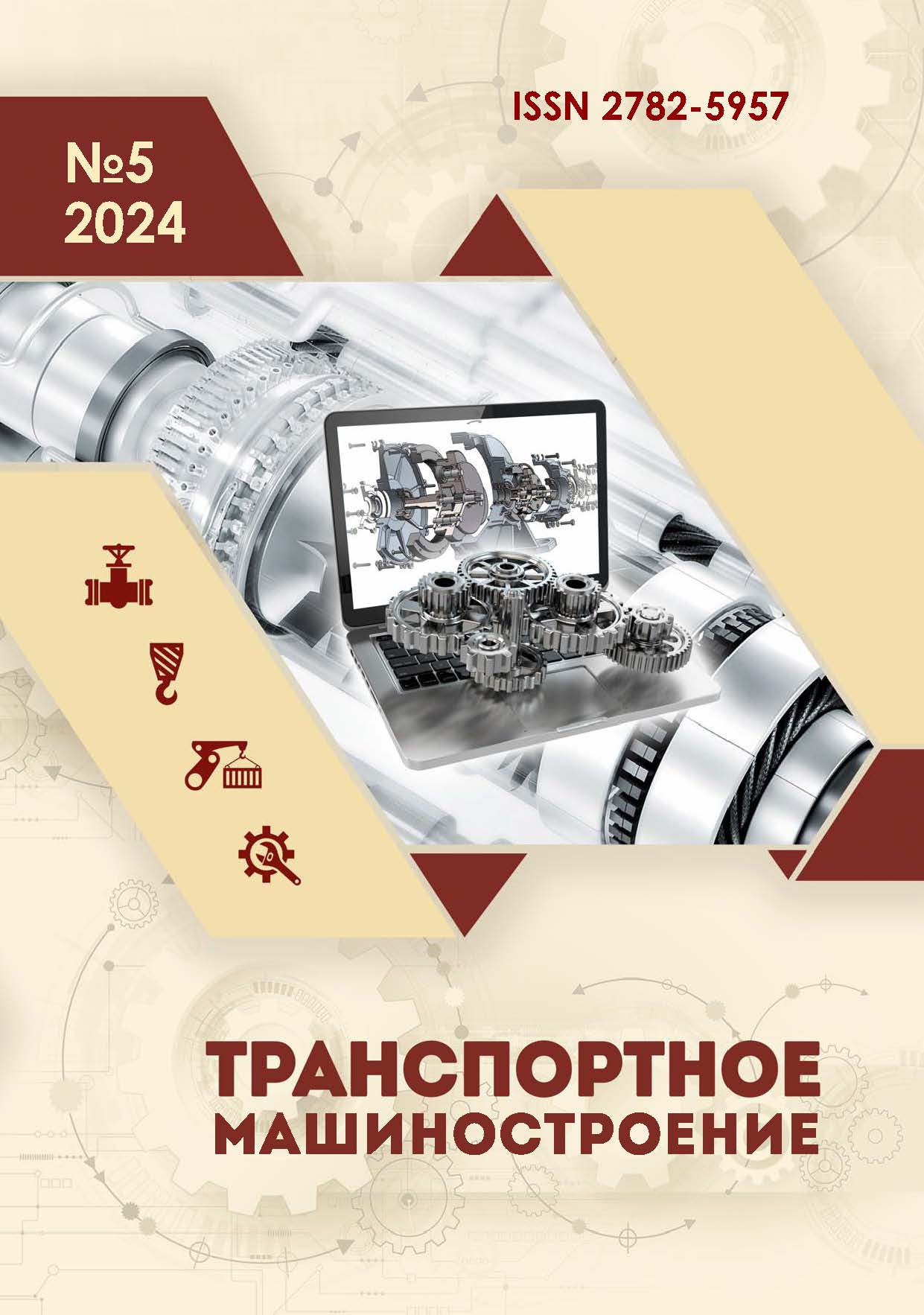from 01.01.2001 until now
Khabarovsk, Khabarovsk, Russian Federation
Khabarovsk, Khabarovsk, Russian Federation
UDK 621.8-1/-9 Конструктивные характеристики, детали, приводы и т.д.
UDK 620.178.4/.6 Испытания при различных видах нагрузок
BBK 392 Железнодорожный транспорт
The problems to plan and ensure a given level of reliability of mechanical systems at all stages of their design and operation occupy an important place in the problem of ensuring the quality of machine-building products. With a significant number of scientific methods and approaches to solving theoretical and applied issues of reliability theory, one of the key directions is to determine the reliability indicators of technical systems and their elements, in particular a wide range of products including sliding friction pairs with periodic impacts. The study of failure origins, from the point of view of physical-mechanical processes occurring in surface layers of elements, under the influence of external factors, allows selecting parameters characterizing the functional state of the pair, and, as a result, its reliability. For example, for sliding friction pairs with periodic impacts, such a parameter is the geometric dimensions of the conjugate elements. The decrease in the geometric dimensions of conjugate elements, due to wear, characterizes the rate of change of the initial parameter values to the maximum permissible ones determining the failure, and can be approximated by linear, power, exponential and other dependencies obtained from actual measurements. According to the obtained functional dependencies of parameter changes over operating time, it makes possible to determine the norm for the parameter regulating their pre-failure state, beyond which failure prediction is possible with varying probability, and, as a result, the reliability of the system as a whole. The use of this method to reliability forecasting through the determination of the pre-failure state of the system can be projected onto technical objects, which performance indicators are geometric parameters that ensure the performance, first of all, of the functions of the elements themselves and the entire technical system, and worn out during operation.
planning, reliability, parameter, basis, contact pairs, element, system, condition, safety margin
1. GOST 27.003-2016 Reliability in Engineering. Composition and general rules for setting reliability requirements. Moscow: Standartinform; 2018.
2. Markov AM, Gabets AV, Ivanov AV. Methodology for studying the characteristics of the friction pair of the shock absorbing device. Actual Problems in Machine Building. 2018;5(3-4):137-143.
3. Nikolsky LI, Selinov IV, Keglin BG. On the work of friction materials in a shock absorber. Vestnik Mashinostroeniya. 1963;10.
4. Inshakov NN, Komolova EF. Metal changes in surface layers under dry friction and their effect on the wear resistance of friction devices. Collection of papers: Surface Quality of Machine Parts. Moscow: Academy of Sciences of the USSR; 1961.
5. Inshakov NN, Golovanov VG. Improvement of wear resistance and service characteristics of friction coupling devices. Proceedings of the Third Conference on Friction and Wear in Machines. 1960;6.
6. Dychko AA. Study of the effect of low temperatures on the operation of the automatic coupling. Collection of works of TEMIIT. Publishing House of Tomsk University; 1959.
7. Chertovskikh EO, Gabets AV, Markov AM. Development of a metal-ceramic composite material for the friction unit of theshock absorbing device of a railway car. Engineering Journal of Don. 2018;1:34-42.
8. Bowden FP, Taylor M. Friction and lubrication of solids. Moscow: Mashinostroenie; 1968.
9. Standards for the calculation and design of railcars with the gauge of 1520 mm (non–self-propelled). Moscow: GosNIIV – VNIIZHT; 1996.
10. Semenov AP. Study of metal setting under joint plastic deformation. Moscow: Publishing House of the USSR Academy of Sciences; 1953.
11. Kordonsky Kh.B. Forcing machine reliability tests. Moscow: Standardizatiya; 1964.
12. Protasov VN, Romanov IO, Shakhov MV. Planning and ensuring the quality and efficiency of technological processes in mechanical engineering: monograph. Moscow-Vologda: Infra-Engineriya; 2023.
13. Boldyrev AP, Zhirov PD, Shlyushenkov AP. Methodology for evaluating the parametric reliability of self–coupling absorbing devices using statistical modeling and theory of extreme values Vestnik RGUPS. 2012;1:46-53.
14. Nikolsky LN, Keglin BG. Shock absorbers of rolling stock. Moscow: Mashinostroenie; 1986.
15. Azovsky AP, Aleksandrov EV, Kobishchanov VV. Fundamentals of design and expertise of technical solutions: textbook for universities of railway transport. Moscow: Marshrut; 2005.






